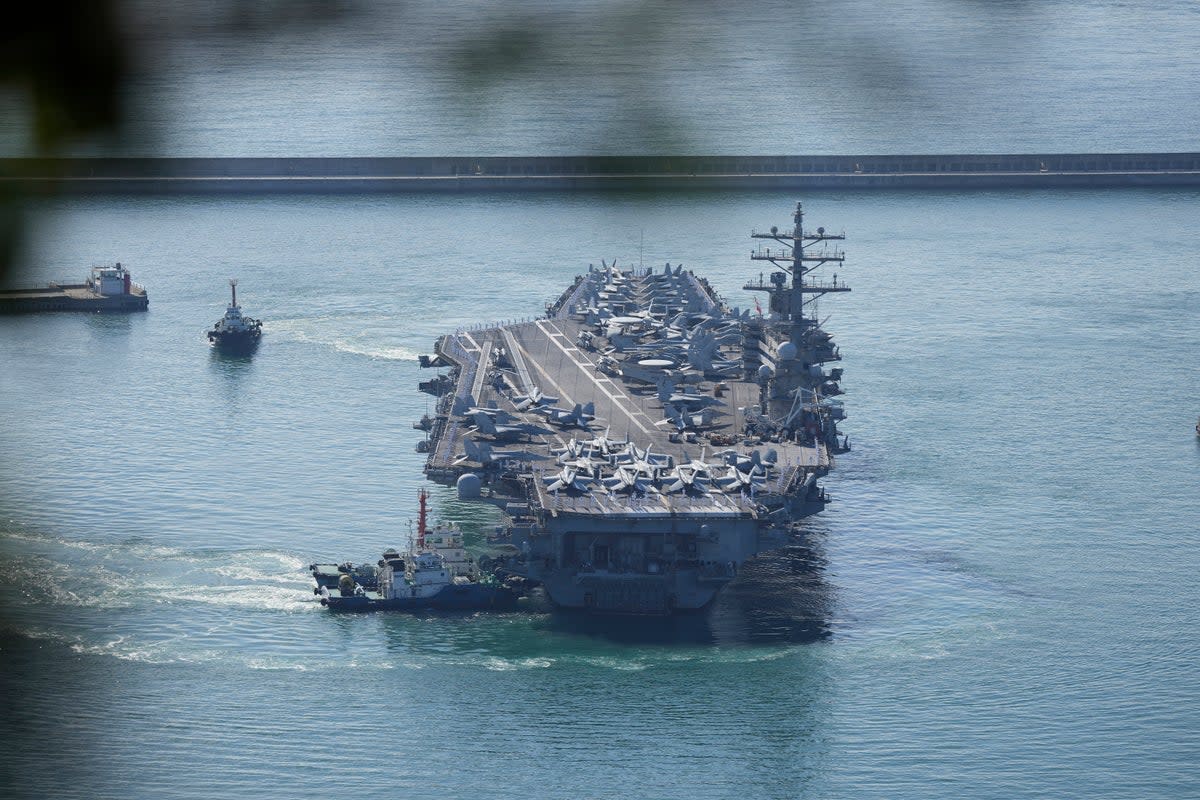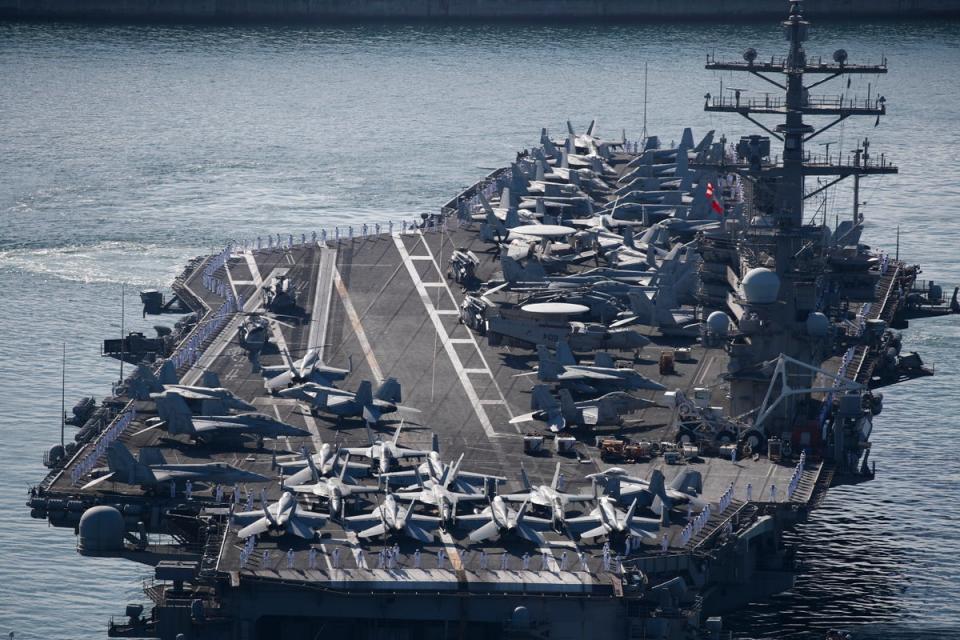US aircraft carrier arrives in South Korea for start of first major joint drills in five years

The nuclear-powered USS Ronald Reagan aircraft carrier has reached the Korean peninsula for the start of major joint military exercises between the US and South Korea.
Washington and Seoul had announced on Monday that they would carry out joint drills aimed at boosting the military readiness of both allies for the first time in half a decade, in a show of strength directed at North Korea.
The aircraft carrier and ships from its accompanying strike coalition docked at a naval base in South Korea’s southern port city of Busan on Friday.
The countries called it a diplomatic display of “the firm resolve by the South Korea-US alliance for the sake of peace and stability on the Korean Peninsula” even as analysts have said this was sending a clear message over Kim Jong-un’s increasing nuclear ambitions.
When Rear Admiral Michael Donnelly, serving as the strike group commander, was asked about what message the joint military exercise would give to Pyongyang, he replied: “We are leaving messaging to diplomats.”
Mr Donnelly added that the visit was designed to build allied relations and bolster interoperability between both the navies and pointed out that the joint drill will ensure the allies were able to respond to all threats.
“It’s an opportunity for us to practice tactics and operations,” the top US naval officer said.
The arrival of the premier US aircraft carrier in Busan is being viewed as the most significant deployment yet under a diplomatic policy between both countries to have more US “strategic assets” operate in the area to deter North Korea.

A long queue of crew members was seen after the ship docked at the port as they took Covid tests before being sent into the city by buses.
Neither Washington nor Seoul have shared details of the upcoming joint drills but said the carrier will be stationed at the port for “several days”.
One of the crew members aboard the aircraft carrier said they were looking to catch a break but were aware of the constant presence of the geopolitical tensions between the US and South Korea’s neighbour to the north.
“You can’t ever really forget what we’re all here for,” the crew member said.
These are among the largest military exercises being carried out between both the nations since 2017 and the first involving an American aircraft carrier since 2018.
The pandemic had scaled back diplomatic drills between the US and South Korea and were further delayed as concerted diplomatic efforts were aimed towards North Korea’s denuclearisation.
This is also the first such exercise after the new South Korean president Yoon Suk-yeol took office earlier this year.
Military analysts have called the joint drills a useful political signal in the geopolitical domain as it reassures Seoul and trains the country’s forces in the face of the threat of missiles from North Korea.

But it does little to deter North Korea, said Mason Richey, a professor at Hankuk University of Foreign Studies in Seoul.
“A carrier group visit certainly doesn’t do much – in fact, it likely does the opposite – to discourage Pyongyang from developing more nuclear weapons and delivery systems, as well as conventional capabilities,” Mr Richey said.
It does, however, helps underscoring the image of Mr Yoon as a leader with whom allies see tighter military coordination and interoperability as a counter to North Korea, the professor added.
Officials in the US last week had called the carrier’s visit a “clear demonstration” of its commitment to deploy and exercise strategic assets to discourage North Korea and boosting regional security.
The US navy had made no mention of North Korea while announcing the visit and called it a “regularly scheduled port visit”.
It added that American crew members are visiting Busan to volunteer at orphanages and explore the K-pop music scene.

